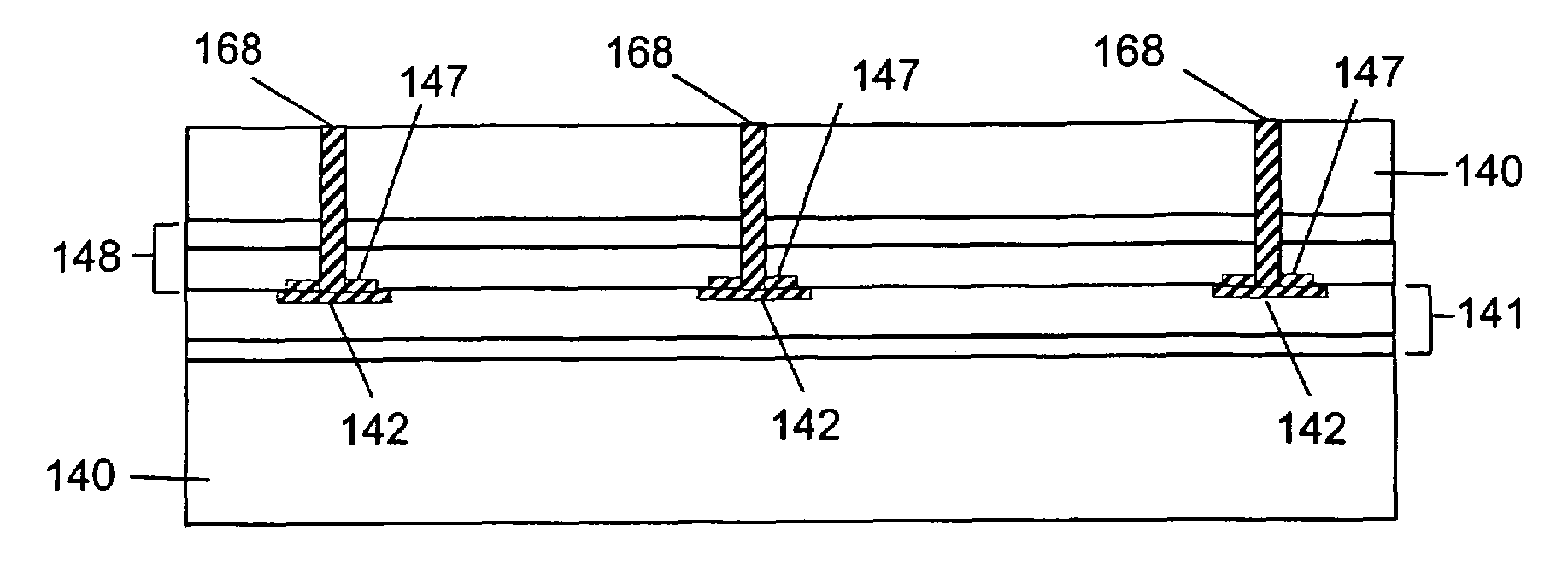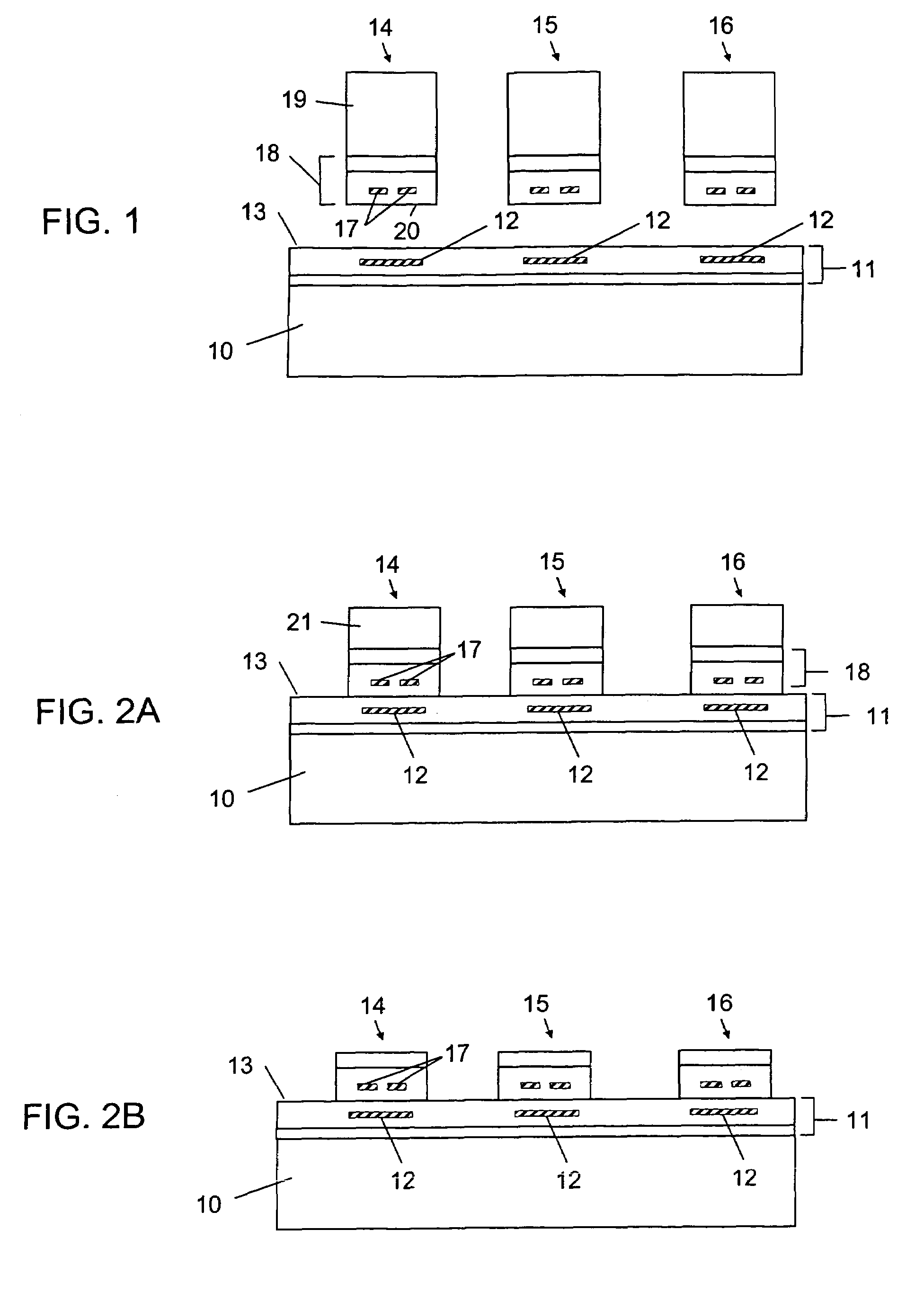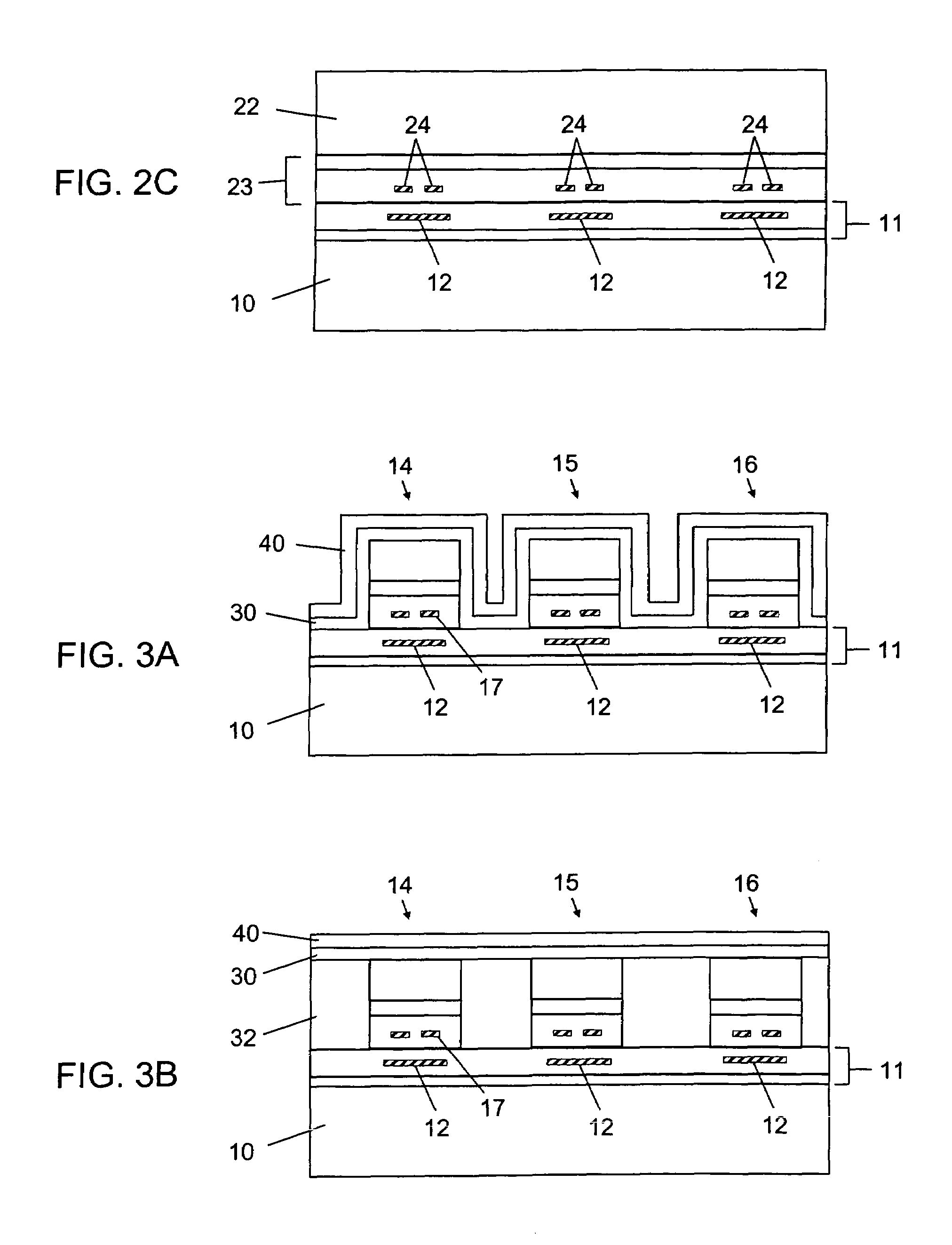3D IC method and device
a three-dimensional integrated circuit and integrated circuit technology, applied in the field of three-dimensional integrated circuits, can solve the problems of increasing ic cost, reducing chip yield, and reducing yield
- Summary
- Abstract
- Description
- Claims
- Application Information
AI Technical Summary
Benefits of technology
Problems solved by technology
Method used
Image
Examples
first embodiment
[0063]Referring now to the drawings, in particular FIG. 1, the method according to the invention will be described. It is noted here that the drawings are not drawn to scale but are drawn to illustrate the concepts of the invention.
[0064]Substrate 10 includes a device region 11 having contact structures 12. Substrate 10 may be made of a number of materials, such as semiconductor material or insulating material, depending on the desired application. Typically, substrate 10 is made of silicon or III-V materials. Contact structures 12 are typically metal pads or interconnect structures making contact to device or circuit structures (not shown) formed in substrate 10. Substrate 10 may also contain an integrated circuit to which the contact structures 12 are connected, and substrate 10 may be a module containing only contact structures. For example, substrate 10 may be a module for interconnecting structures bonded to substrate 10, or bringing out connections for packaging or integration...
fourth embodiment
[0067]An additional factor that determines the optimum size of the gap or aperture is a ratio of a distance given by the vertical separation between contact structures 17 and 12 plus the thickness of the contact structure 17 to the size of the gap or aperture. This defines an aspect ratio of a via that will subsequently be formed between contact structures 17 and 12 to enable an electrical interconnection between contact structures 17 and 12. This vertical separation is typically 1-5 microns, or less, for oxide to oxide direct bonding, as described in application Ser. No. 09 / 505,283, the contents of which are incorporated herein by reference, or potentially zero for metal direct bonding, as described in application Ser. No. 10 / 359,608, the contents of which are herein incorporated by reference. Furthermore, the contact structure 17 thickness is typically 0.5 to 5 microns. With a typical desired via aspect ratio of 0.5 to 5 depending on the process technology used, a typical range of...
fifth embodiment
[0113]A fifth embodiment is shown in FIGS. 20A-20H. This embodiment is similar to the previous embodiments before the formation of via 50 with the exception that contact structures in die 17, 108, 117, or 123 with an aperture or edge that overlaps via 50 is replaced with contact structure 87 without an aperture or overlapping edge. In this embodiment, contact structures 87 in die 84-86 with substrate portion 89, device region 88 are bonded to surface 83 with device region 81, substrate 80, and contact structures 82. Contact structure 87 is positioned over contact structure 82 as shown in FIG. 20A. Die 84-86 can also be bonded to a surface 113 with exposed contact structures 112 similar to that shown in FIGS. 16 and 17 or contact structures 122 similar to that shown in FIGS. 18 and 19. Note that the contact structure 87 may be bonded in direct contact with contact structure 82, which is illustrated in device 86. Dies 84-86 may also have the same contact structure configuration. FIGS....
PUM
 Login to View More
Login to View More Abstract
Description
Claims
Application Information
 Login to View More
Login to View More - R&D
- Intellectual Property
- Life Sciences
- Materials
- Tech Scout
- Unparalleled Data Quality
- Higher Quality Content
- 60% Fewer Hallucinations
Browse by: Latest US Patents, China's latest patents, Technical Efficacy Thesaurus, Application Domain, Technology Topic, Popular Technical Reports.
© 2025 PatSnap. All rights reserved.Legal|Privacy policy|Modern Slavery Act Transparency Statement|Sitemap|About US| Contact US: help@patsnap.com



